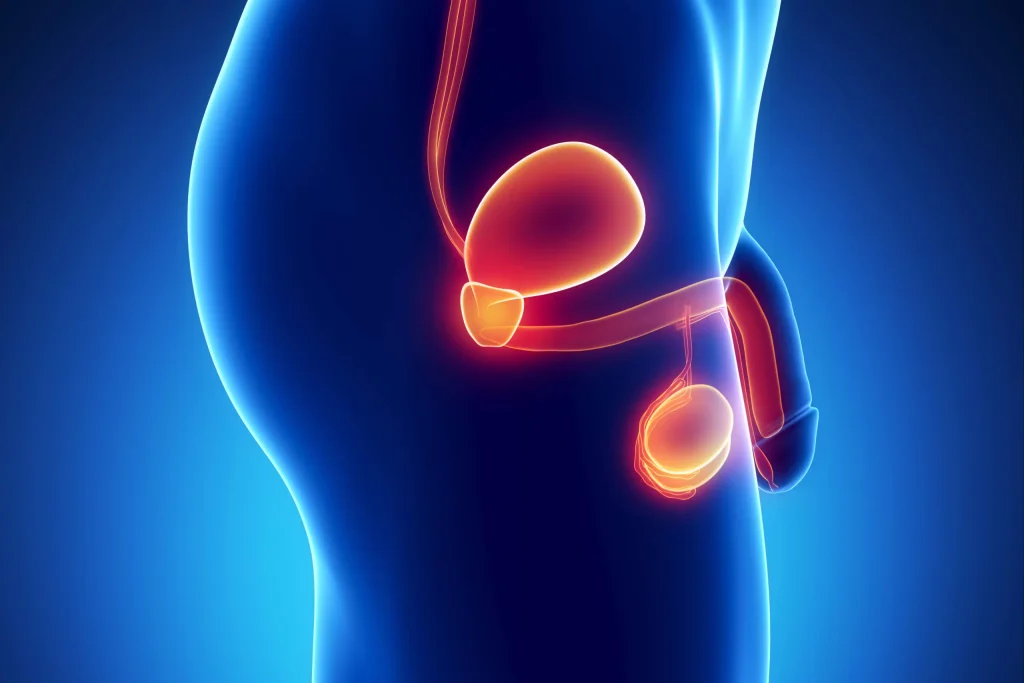
Testicular cancer is a rare but highly treatable cancer that starts in the testicles, most commonly affecting men ages 15–35. Though uncommon, it’s the most frequent cancer in young men, with a 95%+ survival rate when caught early.
Risk factors include undescended testicle, family history, and previous testicular cancer. Symptoms may involve a painless lump, swelling, scrotal heaviness, or dull groin ache—often found during self-exam.
Diagnosis includes ultrasound, tumor marker blood tests, and imaging. Treatment typically involves surgical removal of the testicle, with radiation or chemotherapy used depending on the type (seminoma vs. non-seminoma) and stage.
Testicular cancer begins in the testicles (or testes), which are responsible for producing male hormones and sperm. Though relatively rare, it is the most common cancer in males ages 15 to 35.
Fortunately, testicular cancer is highly treatable, even when diagnosed at later stages.
Estimated New Cases: ~9,760
Estimated Deaths: ~500
Survival Rate: Over 95% for early-stage cases
Average Age at Diagnosis: 33 years old
Undescended Testicle (Cryptorchidism)
Family History of Testicular Cancer
Previous History of the Disease
Caucasian Ethnicity (Higher risk)
Most patients do not have a clear risk factor.
A lump or swelling in one testicle
A feeling of heaviness in the scrotum
Dull ache in the groin or lower abdomen
Sudden collection of fluid in the scrotum
Pain or discomfort in a testicle or scrotum
Many cases are discovered by self-exam. Regular monthly checks are encouraged.
Scrotal Ultrasound – To assess lumps or abnormalities
Blood Tests – Tumor markers (AFP, hCG, LDH)
CT Scan or MRI – To check for spread beyond the testicle
Surgical Removal (Orchiectomy) – Often the first step and also diagnostic
Seminomas – Grow more slowly and usually respond well to radiation
Non-Seminomas – Faster growing and more common in younger men
Treatment depends on the type and stage, but typically includes:
Surgery – Inguinal orchiectomy (removal of affected testicle)
Radiation Therapy – Often used for seminomas
Chemotherapy – Highly effective for advanced cases
Surveillance – Close monitoring after surgery for low-risk cases
Most men maintain full fertility and hormonal function, especially with early detection.
Whether you’re seeking expert care for a urological condition or looking for a second opinion, we’re here to support you every step of the way. Reach out to schedule an appointment, ask questions, or learn more about personalized, minimally invasive treatment options tailored to your needs.